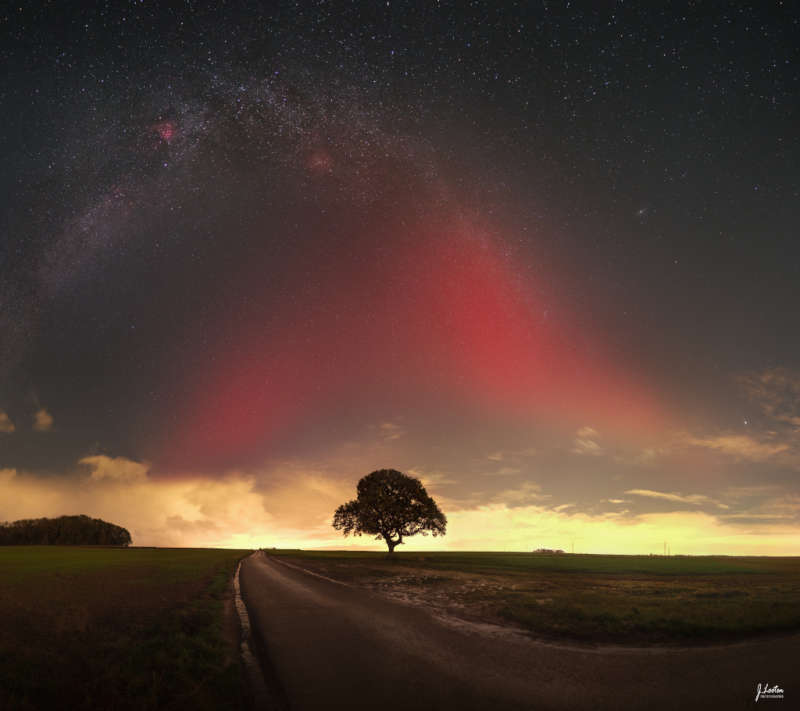Credit & Copyright: Julien Looten
Explanation:
This broad,
luminous
red arc
was a surprising visitor to
partly cloudy evening skies over northern France.
Captured extending toward the zenith in a
west-to-east mosaic
of images from November 5,
the faint atmospheric ribbon of light is
an example of a Stable Auroral Red (SAR) arc.
The rare
night
sky phenomenon
was also spotted at
unusually low latitudes around world,
along with more dynamic auroral displays
during an
intense
geomagnetic storm.
SAR arcs and their relation to auroral emission have been
explored
by citizen science
and
satellite investigations.
From altitudes substantially above the normal auroral glow,
the deep red SAR emission is thought to be caused by strong heating
due to currents flowing in
planet Earth's inner
magnetosphere.
Beyond this SAR, the Milky Way arcs above the cloud banks
along the horizon,
a regular visitor to night skies over northern France.
1999 2000 2001 2002 2003 2004 2005 2006 2007 2008 2009 2010 2011 2012 2013 2014 2015 2016 2017 2018 2019 2020 2021 2022 2023 2024 2025 |
Yanvar' Fevral' Mart Aprel' Mai Iyun' Iyul' Avgust Sentyabr' Oktyabr' Noyabr' Dekabr' |
NASA Web Site Statements, Warnings, and Disclaimers
NASA Official: Jay Norris. Specific rights apply.
A service of: LHEA at NASA / GSFC
& Michigan Tech. U.
|
Publikacii s klyuchevymi slovami:
aurora - polyarnoe siyanie
Publikacii so slovami: aurora - polyarnoe siyanie | |
Sm. takzhe:
Vse publikacii na tu zhe temu >> | |
